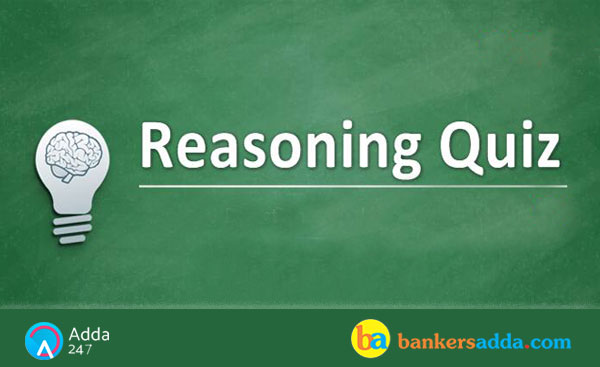
Directions (1-5): Study the set of numbers given below and answer the questions which follow.
649 329 538 751 975
Q1. If in each number, the first and the second digits are interchanged then which will be the lowest number?
Q2. If in each number, first and the last digits are interchanged then which of the following will be the third highest number?
Q3. If in each number, the second and the third digits are interchanged then what will be the resultant if the first digit of highest number is divided by the third digit of lowest number thus formed?
Q4. If we subtract 2 from the each even numbers and subtract 3 from each odd number then what is muliplication of first digit of lowest number and the third digit of highest number thus formed?
Q5. If in each number, all the three digits are arranged in ascending order, which of the following will be the third lowest number?
Directions (6 – 10): Study the following arrangement carefully and answer the questions given below:
R 4 P I J M Q 3 % T @ © U K 5 V 1 W $ Y 2 B E 6 # 9 D H 8 G*Z N
Q6. Which of the following is sixth to the left of the fifteenth from the left end of the given arrangement?
Q7. How many such numbers are there in the given arrangement each of which is immediately preceded by a consonant but not immediately followed by a letter?
Q8. How many such symbols are there in the arrangement, each of which is immediately followed by a letter but not immediately preceded by a number?
Q9. What should come in place of question mark (?) in the following series based on the above arrangement?
IM3 @U5 WYB ?
Q10. Four of the following five are alike in a certain way based on their positions in the given arrangement and so from a group. Which is the one that does not belong to that group?
Directions (11-15): Study the following information carefully to answer the given questions:
Seven neighbours S, P, L, Q, R, M and I live on different floors in the same building having seven floors numbered one to seven. (The first floor is numbered one, the floor above it is numbered two and so on and the topmost floor is numbered as seven.) Three persons live between I and M. M lives on one of the the floor above S, who does not live on an odd-numbered floor. P neither lives neither on odd number nor topmost floor. I does not live below P’s floor. Only one person lives between Q and P. Two persons live between R and S. Q lives neither on the first floor nor on the fourth floor.
Q11. Who lives on the floor just above M?
Q12. How many persons live between L and P?
Q13. Which of the following pairs live on the first floor and the topmost floor respectively?
Q14.Who among the following lives on the topmost floor?
Q15. Which of the following combinations is true?
You may also like to Read:






 GA Capsule for SBI Clerk Mains 2025, Dow...
GA Capsule for SBI Clerk Mains 2025, Dow...
 The Hindu Review October 2022: Download ...
The Hindu Review October 2022: Download ...
 IBPS PO Exam Date 2025 Out, Check Exam S...
IBPS PO Exam Date 2025 Out, Check Exam S...





